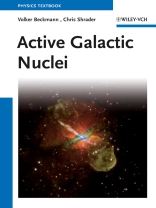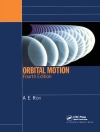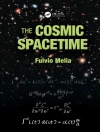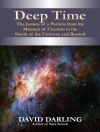Active Galactic Nuclei
This AGN textbook gives an overview on the current knowledge of the Active Galacitc Nuclei phenomenon. The spectral energy distribution will be discussed, pointing out what can be observed in different wavebands. The different physical models are presented together with formula important for the understanding of AGN physics. Furthermore, the authors discuss the AGN with respect to its environment, host galaxy, feedback in galaxies and in clusters of galaxies, variability, etc. and finally the cosmological evolution of the AGN phenomenon.
This book includes phenomena based on new results in the X-Ray and gamma-ray domain from new telescopes such as Chandra, XMM-Newton, the Fermi Gamma-Ray Space Telescope, and the VHE regime not mentioned so far in AGN books. Those and other new developments as well as simulations of AGN merging events and formations, enabled through latest super-computing capabilities.
From the contents:
- The observational picture of AGN
- Radiative processes
- The central engine
- AGN types and unification
- AGN through the electromagnetic spectrum
- AGN variability
- Environment
- Quasars and cosmology
- Formation, evolution and the ultimate fate of AGN
- What we do not know (yet)
Inhoudsopgave
Preface IX
Abbreviations and Acronyms XI
Astronomical and Physical Constants XV
Color Plates XVII
1 The Observational Picture of AGN 1
1.1 From Welteninseln to AGN 1
1.2 Broad Lines, Narrow Lines, and the Big Blue Bump 3
1.3 Jets and Other Outflows 4
1.4 X-ray Observations: Probing the Innermost Regions 5
1.5 Up, Up and Away: from Gamma-Rays toward the Te V Range 7
2 Radiative Processes 11
2.1 Scattering of Photons 11
2.1.1 Thomson Scattering 11
2.1.2 Compton Scattering 12
2.1.3 Inverse Compton Scattering 15
2.1.4 Thermal Bremsstrahlung 17
2.1.5 Pair Production 20
2.2 Synchrotron Emission 21
2.2.1 Synchrotron Emission of a Particle Plasma 25
2.2.2 Polarization 27
2.2.3 Faraday Rotation 28
2.2.4 Synchrotron Self-Absorption 29
2.2.5 Synchrotron Self-Compton 32
3 The Central Engine 35
3.1 The Black Hole 35
3.1.1 Approaching a Black Hole 36
3.1.2 Evidence for Black Holes in AGN 37
3.1.3 Gravitational Field Near a Black Hole: the Schwarzschild Metric 42
3.1.4 Rotating Black Holes: the Kerr Metric 43
3.2 Accretion Processes 44
3.2.1 Accretion Basics: Bondi Accretion and the Eddington Limit 46
3.2.2 Accretion and Viscous Dissipation in a Thin Disk 48
3.2.3 Accretion in Thick Disks 51
3.2.4 Advection-Dominated Accretion Flows 52
3.3 Absorption Close to the Black Hole 54
3.3.1 The Torus Model 57
3.3.2 Mass Loss in AGN 59
3.4 Photoionization Modeling 63
3.5 Narrow and Broad-Line Regions 65
3.6 Reverberation Mapping: Probing the Scale of the BLR 73
3.7 AGN Jets: Emission, Dynamics and Morphologies 77
3.7.1 Raising the Jet 80
3.7.2 Shocks and Knots 84
3.7.3 Superluminal Motion 85
4 AGN Types and Unification 89
4.1 Seyfert Galaxies 89
4.1.1 Optical Classification 90
4.1.2 HII Regions 93
4.1.3 X-ray Classification 95
4.1.4 Narrow-Line Seyfert 1 Galaxies 96
4.2 Low-Luminosity AGN 99
4.3 Ultraluminous X-ray Sources 101
4.4 Ultraluminous Infrared Galaxies – ULIRGs 105
4.5 Radio Galaxies 106
4.6 Quasars 111
4.6.1 Radio-Quiet Quasars 113
4.6.2 Radio-Loud Quasars 115
4.7 Blazars 116
4.8 Unification of AGN 120
4.8.1 Absorbed versus Unabsorbed AGN 122
4.8.2 Radio-Loud versus Radio-Quiet 128
4.8.3 Breaking the Unification 132
4.8.4 Grand Unification of Black Holes in the Universe 136
5 AGN through the Electromagnetic Spectrum 141
5.1 Radio: Probing the Central Engine 141
5.2 Infrared: Dust Near and Far 145
5.3 Optical: Where It All Began 150
5.4 UV: The Obscured Inner Disk 156
5.5 X-rays: Absorption, Reflection, and Relativistically Altered Line Profiles 162
5.5.1 AGN in the X-ray from 1965 to the 1990s 162
5.5.2 Today and Future X-ray Missions 166
5.5.3 The X-ray Spectrum of AGN 169
5.6 Gamma Rays: the Blazar-Dominated Sky 177
5.7 VHE: the Evolving Domain 182
5.7.1 The High-Energy End of the Spectrum 188
5.8 The Whole Picture: the Spectral Energy Distribution 188
5.8.1 SED of Blazars: a Whole Different Story 191
5.8.1.1 The One-Zone Model 193
5.8.1.2 External Compton Scattering 197
5.8.2 The Spectral Energy Distribution of Nonbeamed Sources 200
5.8.2.1 The Synchrotron Branch 201
5.8.2.2 Dust in the SED 202
5.8.2.3 The Disk Component 203
5.8.2.4 The Inverse Compton Branch 205
6 AGN Variability 209
6.1 Variability in Radio-Quiet AGN 209
6.2 Analysis Methods for Variability Studies 212
6.3 Variability of Radio-Loud AGN 220
6.4 Quasiperiodic Oscillations in AGN 225
6.5 Rapid Variability 228
7 Environment 231
7.1 Host Galaxies of AGN 231
7.1.1 Are There Naked Black Holes? 232
7.1.2 Morphological Classification of Galaxies 232
7.1.3 Host Galaxy and Black Hole Mass 237
7.1.4 AGN-Host Galaxy Feedback 240
7.2 The AGN–Starburst Connection 242
7.2.1 Estimating the Star-Formation Rate 243
7.2.2 AGN–Starburst Feedback 244
7.3 Merging 247
7.4 AGN in Clusters of Galaxies 252
8 Quasars and Cosmology 259
8.1 The Universe We Live in 259
8.1.1 Geometry and Distances 260
8.1.2 Measuring Fluxes 265
8.1.3 The Three-Component Universe 267
8.1.4 From the Big Bang to the Cosmic Microwave Background 269
8.1.5 The Dark Matter Universe 271
8.2 AGN and the Distribution of Matter on Large Scales 272
9 Formation, Evolution and the Ultimate Fate of AGN 281
9.1 The First AGN: How Did They Form? 281
9.2 Tools to Study AGN Evolution 286
9.2.1 The Number-Flux Relation 286
9.2.2 The V/Vmax Test 288
9.2.3 Luminosity Function 290
9.3 Luminosity Functions of AGN 294
9.4 AGN and the Cosmic X-ray Background 300
9.5 The Late Stages of an AGN’s Life and Reignition SMBH 304
10 What We Don’t Know (Yet) 307
10.1 The Central Engine 307
10.2 Environment, Interaction, and Feedback 311
10.3 Origin, Evolution, and Fate 312
10.4 Continuing the Quest 313
References 315
Index 347
Over de auteur
Volker Beckmann received his Ph.D. from the University of Hamburg, Germany, for studies of different classes of Active Galactic Nuclei (AGN). He has been working in the field of hard X-ray astronomy in Italy, Switzerland, and in the US at NASA and taught at the University of Maryland, Baltimore County. As an expert on AGN, he has also worked on hard X-ray missions like INTEGRAL and Swift. Since 2009 he has been scientifically responsible for a new data and computing centre for astrophysics at the APC laboratory in Paris.
Chris R. Shrader is an astrophysicist at the NASA Goddard Space Flight Center in Greenbelt Maryland and is also affiliated with the Universities Space Research Association. He has been involved with optical, ultraviolet, X-ray and gamma-ray studies of Active Galactic Nuclei as well as accretion-powered Galactic objects for over 25 years. He currently manages the Fermi Gamma-Ray Space Telescope Science Support Center.












